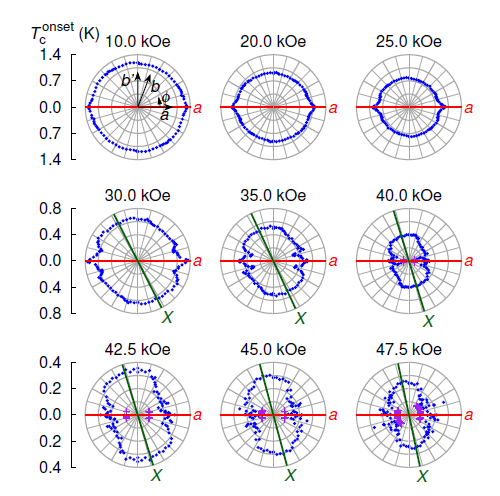I wrote a review paper on the nematic superconductivity, in which the superconducting gap amplitude breaks the rotational symmetry of the underlying lattice. The paper is now published in MDPI Condensed Matter (Condens. Matter vol.4, article number 2, 2019) as a proceedings paper of the Erice Workshop 2018 "Majorana Fermions and Topological Materials Science". The paper contains fancy figures (produced using gnuplot, of course) as below.
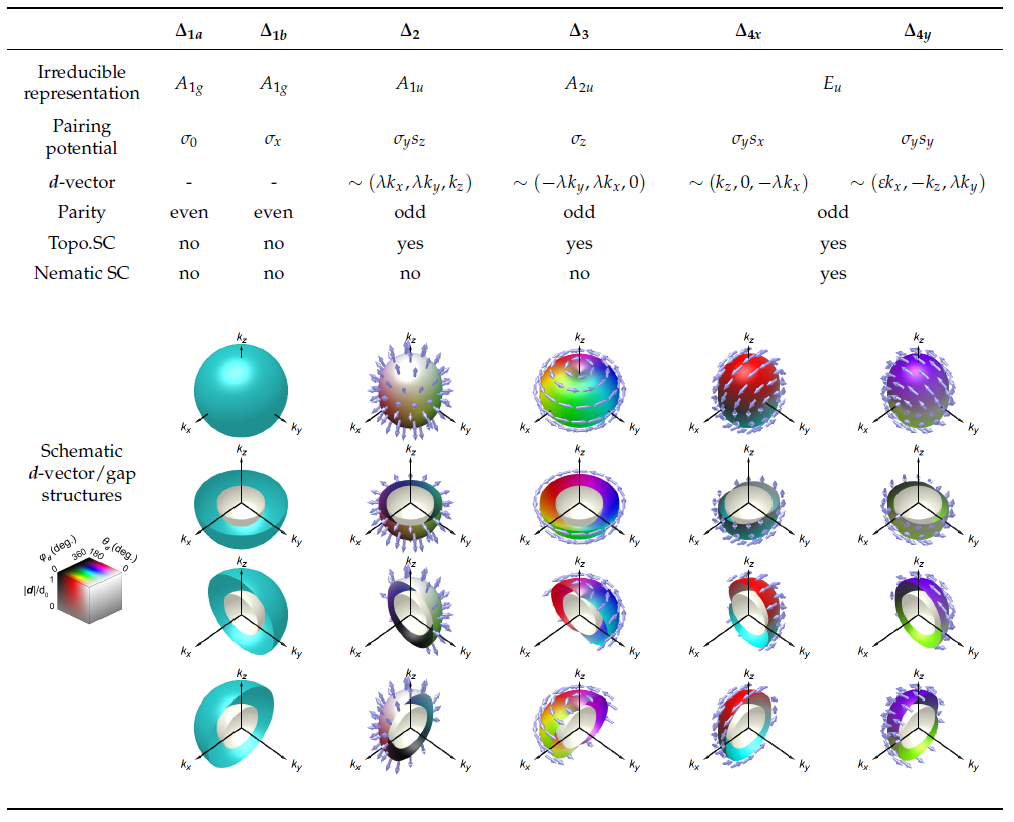
Any superconductivity inevitably interact with magnetic fields, and almost always the magnetic field destabilizes superconductivity with certain ways. Thus, it is extremely important to investigate how the magnetic field interact with superconductivity, not only for scientific researches but also for industrial applications. We studied the superconducting transition of Sr2RuO4, a promising candidate of the spin-triplet superconductor, and revealed that the superconducting transition of this oxide is of the first order when the magnetic field is exactly parallel to the conducting plane of the crystal. This result is rather surprising, since, for ordinary superconductors, in-field transition is always the continuous second order transition, due to the gradual suppression of superconductivity by the penetration of quantized vortices. Only a few exceptions are known, all of which however are irrelevant for Sr2RuO4. Thus, the observed sudden destruction of superconductivity via the first-order transition evidences that the spin-triplet superconductivity in Sr2RuO4 is destabilized by an unknown mechanism. In other words, there must be novel interaction between superconductivity and magnetic field responsible for the destruction of superconductivity.
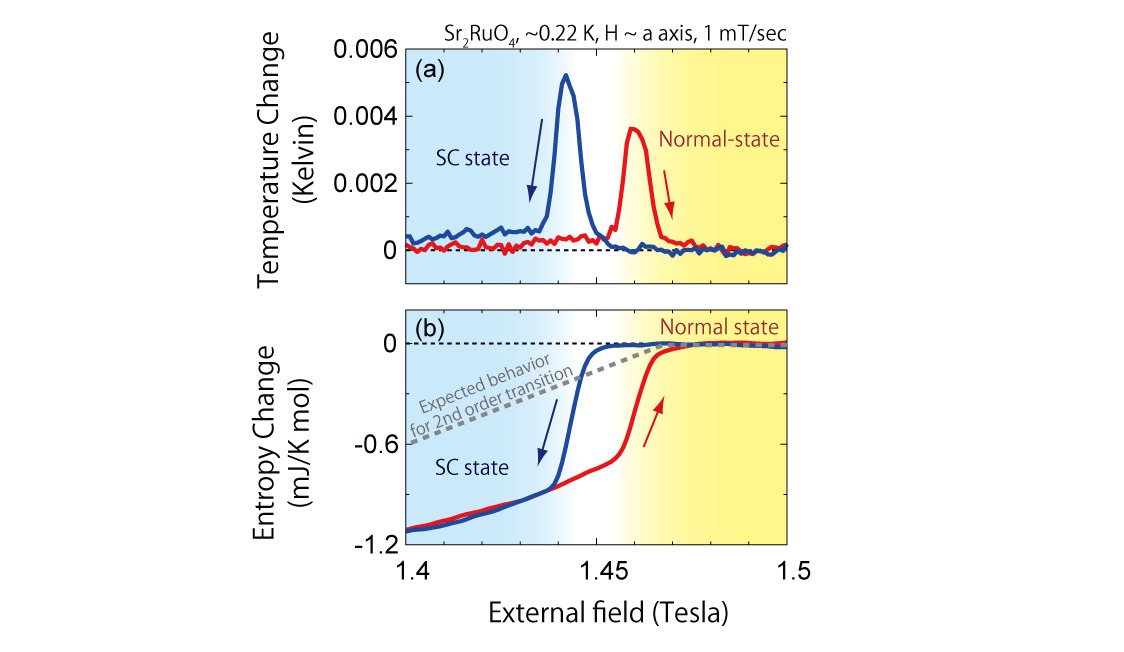
The structure of the superconducting gap, which is one of the most fundamental pieces of information of a superconductor, has been unresolved for more than 30 years in the case of the first-discovered organic superconductors: the TMTSF-based molecular conductors. Overcoming experimental difficulties, we succeeded in the first mapping of the positions of the zeros on the gap of (TMTSF)2ClO4 from our precise field-angle resolved calorimetory and in proposing possible gap structures. Generally speaking, the structure of the gap is closely related to the mechanism of superconductivity in a material. Thus, our mapping provides a new clue to unveil the mechanism of unconventional superconductivity in the TMTSF systems, and to investigate similarities to other superconductors such as high-transition-temperature copper oxides or iron pnictides. In addition, we determined the thermodynamic phase diagram of this material for the first time for all three principle field directions. This result proposes existence of two regions: a long-range ordered superconducting state in low magnetic fields and an interesting short-range ordered or fluctuating superconducting state in higher fields. This result is published in the Rapid Communication section of Physical Review B. read more...
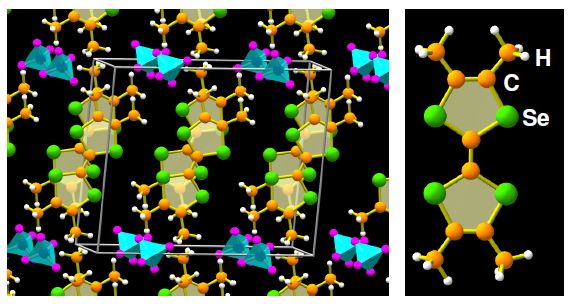
We have demonstrated a complicated interplay of superconducting pair-breaking effects in the quasi-one-dimensional superconductor (TMTSF)2ClO4, depending on the applied magnetic field strength and direction. We also suggest that spacially modulated superconducting states (FFLO states) are realized in high fields. These results are published in Journal of the Physical Society of Japan. read more...
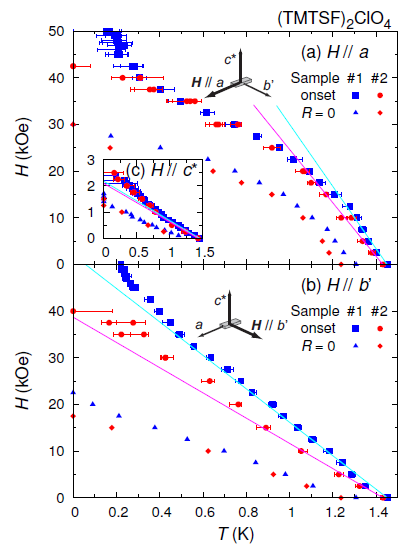
We discovered unusual anisotropy in the in-plane field-angle dependence of the onset temperature of superconductivity in the quasi-one-dimensional superconductor (TMTSF)2ClO4. We propose that this anisotropy results from a reduction of the effective dimensionality in the alectronic state driven by the applied magnetic field, and from a occurence of a spatially-modulated superconducting state (so-called FFLO state). The results are publised in Physical Review Letters. read more...
